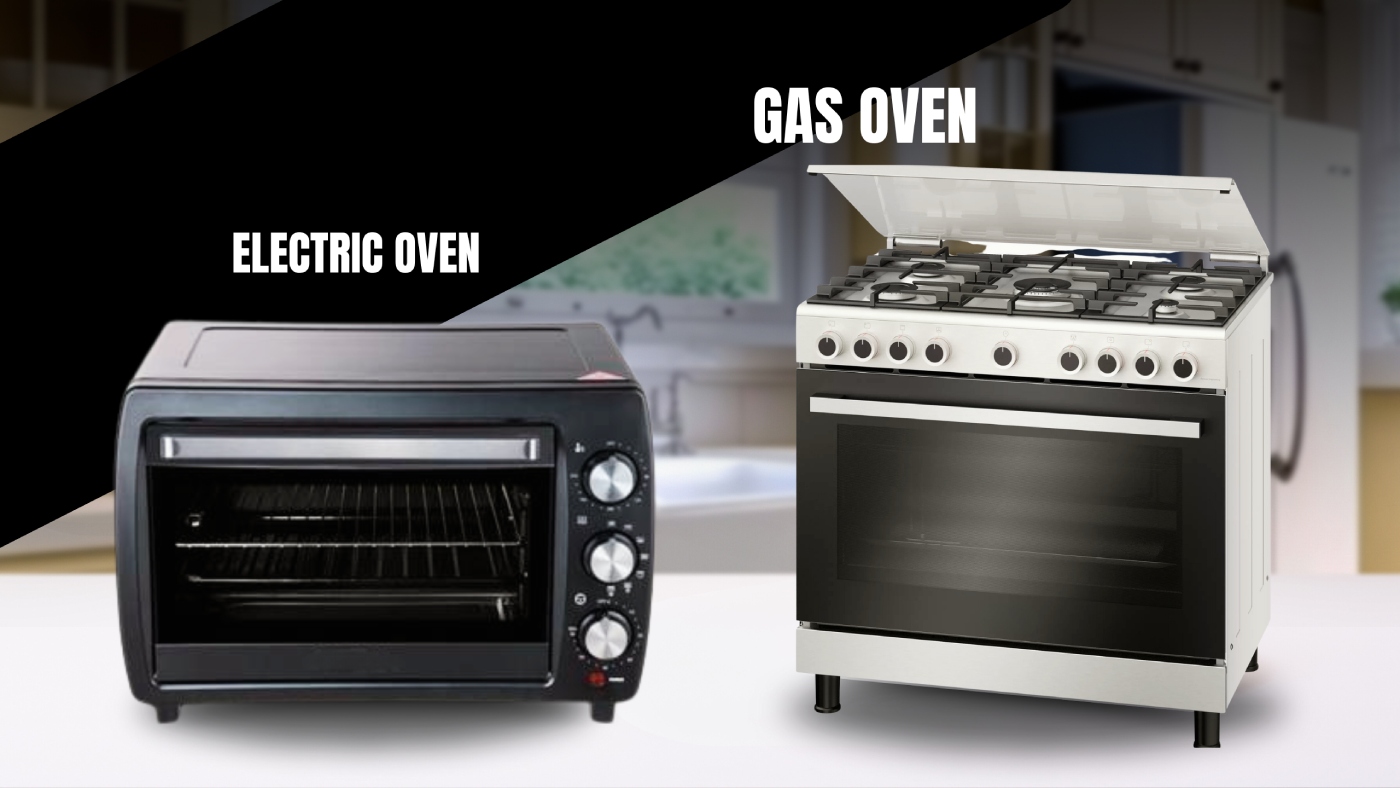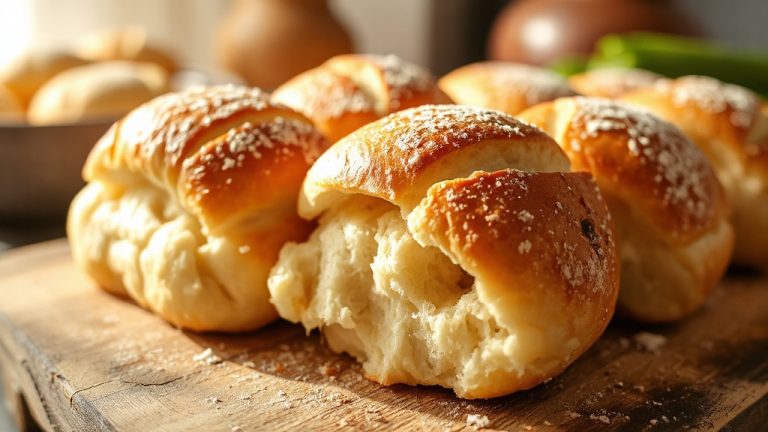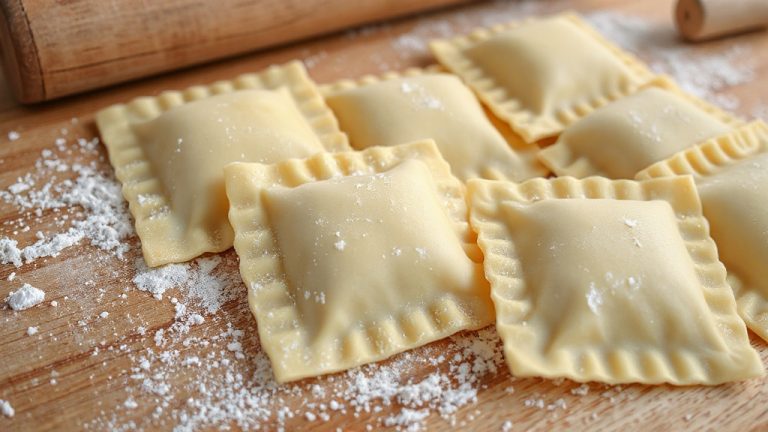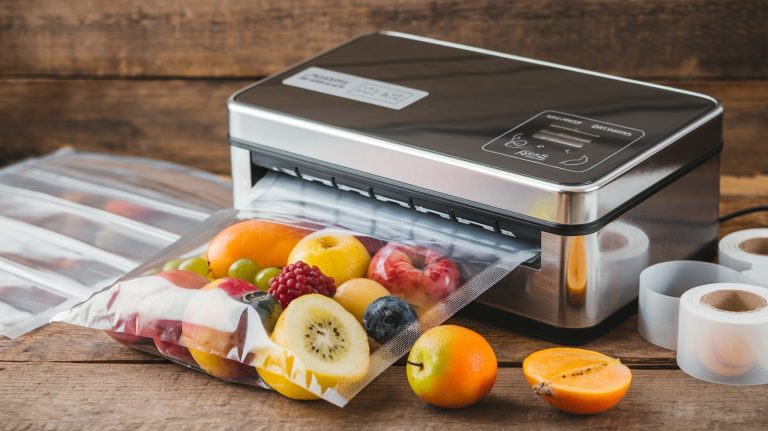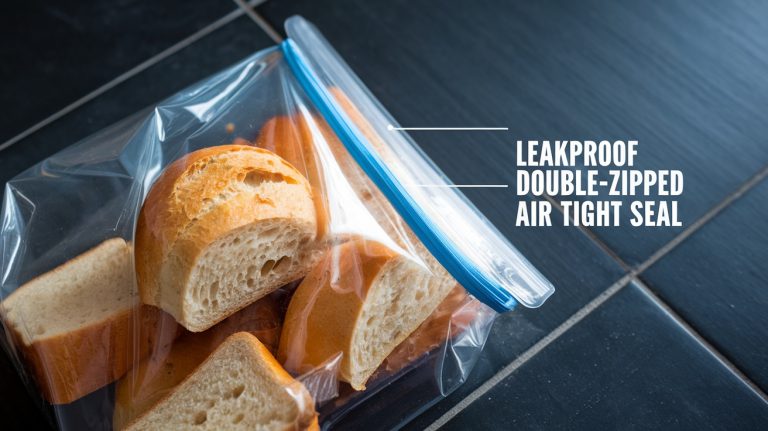Electric Oven Vs Gas Oven for Baking: Find Your Baking Soulmate
When you’re baking, your choice between an electric oven and a gas oven can make a real difference. Electric ovens provide consistent temperatures and even heat, making them perfect for precision baking.
They excel at creating crispy crusts but can dry out baked goods, so monitoring is key. On the other hand, gas ovens offer quick temperature adjustments and a moisture-rich environment, ideal for yeast-based recipes.
However, they can struggle with hot and cold spots. Knowing the quirks of each will help you achieve the best results, and there’s plenty more to explore on how to maximize your baking success.
Key Takeaways
- Gas ovens provide instant heat and humidity, enhancing texture for yeast-based baked goods, while electric ovens ensure consistent temperatures for precision baking.
- Electric ovens excel in even heat distribution and feature convection settings, reducing baking times by up to 25%.
- Gas ovens require regular maintenance to prevent safety risks, while electric ovens typically have lower initial costs but may incur higher long-term repair expenses.
- Moisture retention in gas ovens promotes better dough rise and prevents overly hard crusts, whereas electric ovens produce dry heat ideal for crispy crusts.
- Both oven types necessitate preheating to maintain temperature stability, with electric ovens typically maintaining temperatures within 5°F, compared to gas ovens’ fluctuations of 10°F to 20°F.
Benefits of Gas Ovens
When you choose a gas oven, you’re opening a world of baking benefits that can transform your kitchen experience.
The quick temperature adjustments let you respond instantly to your baking needs, while the moisture retention helps your dough rise beautifully.
Plus, the traditional heat of a gas oven replicates the conditions of professional bakeries, giving your baked goods an edge in flavor and texture.

Quick Temperature Adjustments
A gas oven’s ability to make quick temperature adjustments can greatly enhance your baking experience. Unlike electric ovens, which take time to heat up or cool down, gas ovens respond instantly to your commands. This responsiveness allows you to modify heat levels without delays, giving you valuable cooking flexibility when you need it most.
Consider the benefits of using gas ovens for precise control:
- Immediate temperature changes: You can quickly increase or decrease heat as needed.
- Enhanced cooking flexibility: Easily adapt to recipe demands, whether you’re baking, broiling, or roasting.
- Time efficiency: Reduce overall cooking times with instant heat adjustments.
- Perfect for delicate tasks: Caramelizing or searing becomes effortless with precise temperature control.
- Preferred by chefs: Many professional cooks rely on gas ovens for their responsiveness and reliability.
Moisture Retention Benefits
After enjoying the quick temperature adjustments that gas ovens offer, you’ll appreciate another important advantage: moisture retention.
Gas ovens generate moisture during the cooking process thanks to combustion, creating a humid environment that can greatly enhance the rise and texture of your baking goods. This added moisture prevents crusts from becoming overly hard, allowing for a softer, more inviting texture in breads and pastries.
In particular, yeast-based recipes thrive in this humid baking environment. The moisture helps activate the yeast, promoting better dough expansion for a fluffier result.
Unlike electric ovens, which often produce dry heat that can leave you needing additional steam, gas ovens naturally retain moisture, making them a superior choice for achieving that perfect crust formation.
The increased humidity also boosts browning and flavor development in your baked goods, making them more appealing and delicious.
Ideal for Traditional Baking
For those who cherish the art of traditional baking, natural gas ovens are a top choice. When exploring the debate between gas vs. electric ovens, it’s clear that gas models offer unique advantages, making them ideal for baking everything from bread to pizzas.
- Humidity: Gas ovens create a moist environment that promotes perfect yeast growth and dough rise.
- Instant Heat: The best natural gas pizza ovens provide quick temperature adjustments, ensuring even heat distribution for delicate recipes.
- High Temperatures: These ovens can effortlessly reach up to 450°F (232.2°C), ideal for achieving that crispy crust on pizzas and pastries.
- Moisture Retention: The combustion process naturally adds moisture, preventing baked goods from developing overly hard crusts.
- Intuitive Cooking: The visible flame in a gas oven offers a traditional and hands-on baking experience.
Drawbacks of Gas Ovens
While gas ovens have their perks, they come with a few drawbacks you should consider.
You might find that uneven cooking temperatures and higher humidity levels can lead to inconsistent baking results and soggy crusts.
Plus, the need for regular maintenance and safety checks can add extra hassle to your baking routine.
Uneven Cooking Temperatures
In the domain of baking, gas ovens often present a challenge with their uneven cooking temperatures, which can greatly impact your results. Unlike electric ovens that maintain stable heat, gas ovens tend to have hot and cold spots. This leads to temperature fluctuations ranging from 10°F to 20°F, making it essential for you to monitor your dishes closely.
When baking with gas ovens, you might encounter several issues:
- Burnt edges on cookies or pastries
- Underbaked centers in cakes
- Inconsistent browning of bread
- The need to rotate trays or pans frequently
- A greater likelihood of adjusting cooking times
These uneven cooking conditions can frustrate even the most seasoned bakers.
Delicate baked goods, in particular, suffer, as they demand precise temperature control. To achieve ideal baking results, you’ll need to stay vigilant and make adjustments throughout the process.
Higher Humidity Levels
Gas ovens not only present challenges with uneven cooking temperatures, but they also generate higher humidity levels during baking. This added moisture can interfere with the browning and crisping of your baked goods, leading to a texture that mightn’t meet your expectations.
While the humidity can be advantageous for yeast-leavened products, it often results in soggy crusts if you don’t manage it carefully.
The uneven distribution of humidity in gas ovens creates hot and cold spots, which can be particularly troublesome for delicate items like pastries and cakes. These temperature fluctuations, combined with the higher humidity levels, make precise baking more challenging.
You might find yourself adjusting your recipes or techniques just to accommodate the extra moisture, complicating the baking process.
If you’re used to a consistent baking environment, switching to a gas oven might require some experimentation. You’ll need to keep a close eye on your creations to guarantee they turn out as intended, which can be frustrating.
Maintenance and Safety Risks
When it comes to using gas ovens, maintenance and safety risks can’t be overlooked. Regular upkeep is essential to guarantee your oven operates safely and effectively.
Here are some significant aspects to take into account:
- Gas leaks: You must routinely check for leaks; even a small one can pose considerable safety risks.
- Fire hazard: Open flames can ignite nearby materials, making supervision imperative, especially with kids or pets around.
- Carbon monoxide: Proper ventilation is crucial to prevent dangerous buildup. Poorly installed or maintained systems can lead to severe health issues.
- Burner maintenance: Cleaning burners and confirming the ignition system works properly can help avoid gas accumulation and potential explosions.
- Uneven cooking: Gas ovens may produce inconsistent temperatures, requiring you to monitor and adjust while baking for the best results.
Advantages of Electric Ovens
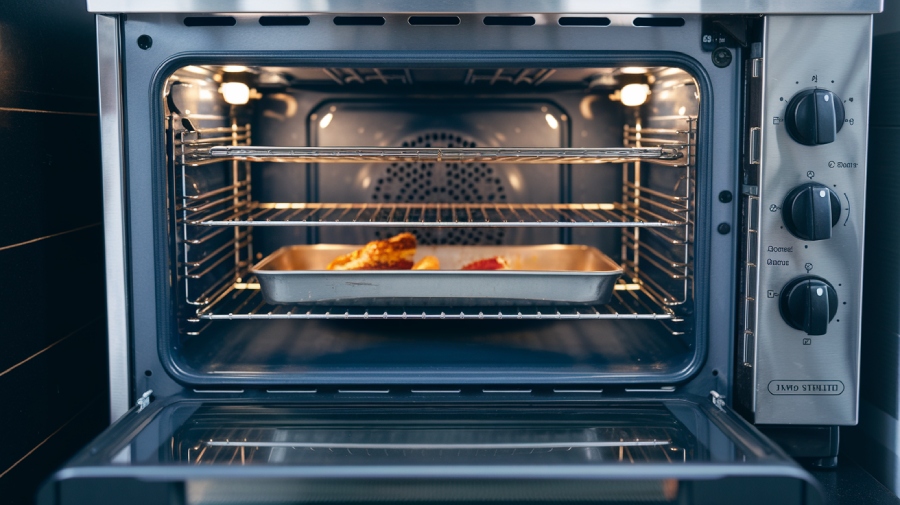
While many bakers appreciate the charm of gas ovens, electric ovens offer a range of advantages that can greatly enhance your baking experience. One of the key benefits is the easy temperature control; electric ovens take precision to a new level, typically maintaining a consistent temperature within 5°F. This is vital when you’re baking delicate items like cakes and pastries, where every degree matters.
The dry heat produced by electric ovens is another advantage, ideal for achieving crispy crusts and perfect browning, making them a favorite for baking bread and cookies.
If you enjoy experimenting, many electric models come with convection settings, enhancing air circulation for even cooking and reducing baking times by up to 25%.
Additionally, electric ovens often feature self-cleaning options, simplifying maintenance and allowing you to focus more on your recipes rather than cleanup.
And let’s not forget budget considerations; electric ovens typically have lower initial costs compared to gas models, making them a savvy choice for home bakers.
Disadvantages of Electric Ovens
Despite their many advantages, electric ovens come with a few drawbacks that bakers should consider. When you’re deep into baking, these issues can impact your results.
- Longer heating times can delay the start of your baking, which can be frustrating when you’re enthusiastic to get going.
- The dry heat produced by electric ovens might cause your baked goods to dry out more quickly, so you’ll need to monitor baking times closely to avoid overcooking.
- With slower temperature adjustments, electric ovens may not be ideal for recipes requiring rapid changes in heat, potentially compromising your dish.
- Many electric ovens lack the visual cues provided by gas flames, making it harder for you to gauge cooking progress based on heat intensity.
- Finally, the reliance on heating elements means you’ll face the possibility of periodic replacements, adding to your maintenance concerns over time.
Convection Ovens Explained
If you’re looking to elevate your baking game, convection ovens might be the answer. These innovative ovens use a fan to circulate hot air, ensuring even heat distribution in the cooking chamber. This feature eliminates hot and cold spots, which can greatly enhance your baking results.
| Feature | Convection Ovens | Traditional Ovens |
|---|---|---|
| Heat Circulation | Uses a fan | No fan |
| Cooking Time | Reduces by ~25% | Standard time |
| Temperature Adjustment | Lower by 25°F (14°C) | No adjustment needed |
| Best For | Cookies, pastries | General baking |
The efficient air circulation allows for multitasking in the kitchen, making it easier to prepare multiple dishes at once. You’ll find that convection ovens are fantastic for achieving better browning and crispiness, thanks to the dry heat they generate. Many models even come with a “bake” setting, allowing for gentle baking while still benefiting from consistent air circulation.
Comparing Baking Environments
When you’re deciding between electric and gas ovens for baking, understanding the differences in their baking environments can greatly impact your results. Each type offers unique characteristics that can influence the final quality of your baked goods.
- Electric ovens maintain a dry baking environment, essential for achieving crispy crusts.
- Gas ovens generate humid heat due to combustion, which can enhance yeast activity.
- Electric ovens provide even heat distribution, vital for precise temperature control.
- Temperature stability in electric ovens allows for reliable baking outcomes.
- Switching between electric and gas requires adjustments for humidity levels.
If you’re baking bread or pastries, you might prefer the consistent results from an electric oven.
However, if you’re after softer crusts and better dough rise, a gas oven’s humid atmosphere might be your best bet.
Keep in mind that gas ovens can have hot and cold spots, so you may need to rotate your baked goods for uniformity.
Heat Management Techniques
When you bake, understanding heat management techniques can make all the difference in your results.
Whether you’re dealing with the stable temperatures of an electric oven or the fluctuations of a gas oven, mastering preheating and humidity control is essential.
Let’s explore how these factors influence your baking success and how you can optimize your approach for perfect pastries and breads.
Temperature Stability Considerations
Maintaining consistent temperatures is essential for successful baking, and this is where electric ovens shine. They typically maintain temperature stability within 5°F, which is a game-changer for achieving even and consistent results. This precision is critical when you’re baking delicate items like cakes and pastries, where every degree matters.
In contrast, gas ovens can fluctuate between 10°F to 20°F, making it necessary for you to frequently monitor and adjust cooking times.
To make the most of your baking experience, consider these points:
- Electric ovens use thermistors for enhanced temperature accuracy.
- The uniform heat distribution in electric ovens supports consistent baking outcomes.
- You have more flexibility in rack positioning with electric ovens.
- Gas ovens require careful placement of baked goods to avoid hot and cold spots.
- Preheating is essential in electric ovens to guarantee stable temperatures.
Preheating Best Practices
Preheating is an essential step in the baking process, as it sets the stage for achieving that perfect rise and golden crust. For electric ovens, you’ll want to allow about 10-15 minutes for preheating times to guarantee consistent temperatures.
Consider placing a baking stone inside; it’ll help maintain temperature stability and evenly distribute heat once you start baking.
If you’re using a gas oven, remember it heats up quickly, but you should still let it preheat for a few minutes before opening the door to avoid a sudden temperature drop.
Gas ovens can fluctuate by 10°F to 20°F, so always keep an eye on that.
To enhance your heat management, invest in an oven thermometer. It’ll assure accurate preheating, allowing you to know precisely when your oven’s ready for action.
Electric ovens usually achieve a desired temperature within 5°F accuracy, giving you the precision you need for successful baking.
Humidity Control Methods
After establishing the right temperature in your oven, humidity control becomes a key factor in achieving the best results for your baked goods. Different ovens require different humidity control methods to create the ideal baking environment.
For instance, steam’s role is essential in sourdough baking, as it enhances flavor and texture.
- Gas ovens naturally generate a humid atmosphere, promoting yeast growth and preventing hard crusts, which is perfect for bread.
- Electric ovens, on the other hand, can be quite dry, risking the dryness of your baked goods without added moisture.
- To enhance moisture in electric ovens, consider placing a shallow pan of water on the bottom rack. This simple trick boosts crust formation and overall quality.
- If you’re baking in a gas oven, be mindful of temperature fluctuations and rotate your items for even cooking.
- For electric ovens, you can also use aluminum foil to cover items that brown too quickly, adjusting temperature and time as needed.
Cost and Efficiency Analysis
When considering the cost and efficiency of electric versus gas ovens for baking, you’ll find several factors that can greatly influence your decision.
Initially, electric ovens tend to have lower purchase prices, but you might need to factor in the cost of upgrading to a 220V power outlet, which can spike your overall expense.
On the other hand, gas ovens generally have lower long-term operational costs because natural gas is typically cheaper, making them a more budget-friendly option if you bake frequently.
In terms of energy efficiency, electric ovens usually shine, especially Energy Star-rated models that can save you up to 20% on energy bills compared to standard versions.
Maintenance costs also play a role in your decision; gas ovens require regular checks on gas lines and burners, while electric models tend to need less upkeep.
Finally, consider resale value—gas ovens are often favored by culinary professionals, which could enhance your kitchen’s market appeal.
Tips for Baking Success
Understanding the nuances between electric and gas ovens can greatly impact your baking experience, especially when it comes to achieving that perfect rise or golden crust.
Electric ovens, particularly those with convection technology, can enhance baking speed and evenness, providing consistent results. Here are some tips to guarantee your baking success, no matter which oven you use:
- Preheat your electric oven thoroughly to ensure consistent oven temperatures; it takes time for heating elements to reach the desired heat.
- If you’re using a gas oven, rotate your baked goods halfway through the baking process to even out any uneven heat distribution.
- For electric ovens, consider placing a pan of water inside to introduce humidity, which can enhance the quality of items like bread.
- In gas ovens, you might need to adjust your baking times slightly upwards due to the more humid atmosphere that can affect texture and rise.
- Choose metal bakeware in electric ovens for better browning, but avoid dark-colored pans in gas ovens to prevent over-browning.
Frequently Asked Questions
Which Is Better for Baking, an Electric Oven or a Gas Oven?
Imagine pulling a perfectly golden cake from the oven, the aroma filling your kitchen.
When it comes to baking, you’ll want to weigh your options carefully. Electric ovens provide consistent temperatures and a dry environment, ideal for delicate pastries and crispy cookies.
Gas ovens offer a humid atmosphere, great for bread, but can lead to uneven cooking.
Ultimately, if precision matters, you’ll likely lean towards an electric oven for the best results.
Do Chefs Prefer Gas or Electric Ovens?
When it comes to ovens, chefs often lean towards gas for its quick heat response and precise control.
You’ll find that gas ovens allow for immediate adjustments, making them perfect for high-demand cooking.
However, some chefs appreciate the even heat distribution of electric ovens, especially for delicate tasks.
Ultimately, your choice might depend on the specific dishes you’re preparing, your cooking style, and what features you find most convenient in your kitchen.
Which Oven Type Is Best for Baking?
Imagine pulling a perfectly golden loaf of bread from the oven, its crust crackling as you slice into it.
When considering which oven type is best for baking, think about your baking style. If you crave consistent temperatures for cakes and pastries, an electric oven‘s steady heat is your best bet.
However, if you love experimenting with bread, a gas oven‘s humidity might give your dough that extra rise and texture you desire.
What Are the Disadvantages of Electric Ovens?
When you consider electric ovens, you’ll notice a few drawbacks.
They usually take longer to preheat, which can slow down your cooking. The dry heat they produce might dry out your baked goods if you don’t keep an eye on them.
Plus, adjusting the temperature isn’t as quick, making it hard to respond to changes in recipes.
Bake Smarter: Gas or Electric? Find Your Fit
In the delightful dance of baking, both electric and gas ovens have their charms. While gas ovens bring a warm, inviting embrace with their immediate heat, electric ovens offer a gentle, consistent warmth that nurtures your creations.
Ultimately, your choice depends on your baking style and kitchen rhythm. Whichever oven you opt for, remember that the true magic lies in your passion and creativity. So preheat that oven, and let your culinary adventure begin.

